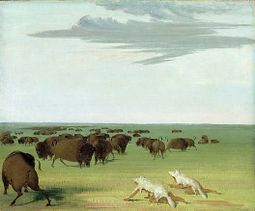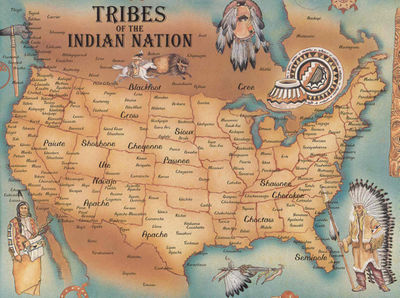how to find out what native american tribe you are from
| Native American Topics | |
 | |
| Showtime Research | |
| |
| Tribes | |
|
|
| Record Types | |
|
|
| Bureau of Indian Diplomacy | |
|
|
| Other Topics | |
|
|
Identify the tribe of your ancestor [edit | edit source]
To observe Indian ancestors, first identify their tribe past following the process beneath. If you know your ancestor's tribe, employ the Indigenous Peoples of the United States Genealogy Wiki page.
1. Find out where your ancestor lived.
Interview the ancestor's living relatives and friends. Ask them if they have certificates, family Bibles, obituaries, diaries, letters, or other sources which may comprise birth, union, or expiry information and places. Ask them to tell you where the person lived at different times in his or her life.
-
- Be sensitive when interviewing others. Some tribes believe it improper to speak of a deceased ancestor.
- Be sensitive when interviewing others. Some tribes believe it improper to speak of a deceased ancestor.
Search non-Indian records such every bit demography, church, and vital records for the ancestor's family. See the United States Genealogy Wiki pages, the Canada Wiki pages, and private state and provincial Wiki pages for sources to search.
-
- The 1900 and 1910 U.S. federal censuses list the person's tribe. Think this does non point official membership in a tribe.

-
-
-
- If relatives have mentioned a tribe their ancestors may have belonged to, assume this is right until you can prove otherwise.
- If you do not know the tribe, consider that your antecedent may not exist Indian until you tin testify the name of the tribe.
- Indians may have hidden their tribal identities for social, economical, or political reasons.
- Search not-Indian records for clues.
-
-

One time you know the state where an ancestor lived, go to the Wiki folio for the Indians of that state or province to run across a list of Indian tribes in that state or province. Study those tribes and try to identify which was the tribe of your ancestor. Tribal pages in the Wiki include a fourth dimension line, history, agencies, records, reservations, references and links to online sources and the FamilySearch Catalog.
Learn about your ancestor'due south tribe. Larn about other tribes in the area to find background information. Learn their naming and relationship customs. The following sources will also assistance:
- John Reed Swanton, The Indian Tribes of North America (Washington, D.C.: Smithsonian Institution Press, 1974). Access Genealogy digital version; At various libraries (WorldCat); FHL Motion picture 1598299 item 6; Book 970.1 S24i 1974 This volume is bundled by region, then by state, then past tribe.
- Sharon Malinowski, et. al., The Gale Encyclopedia of Native American Tribes, 4 vols. (Detroit, Mich.: Gale Enquiry, 1998). At various libraries (WorldCat); FHL Book 970.i G131g. It includes: records of churches, schools, government agencies, forts, reservations, reserves, and tribes which may include your ancestor.
See likewise: Searching for a Native American When the Tribe is Unknown.
Search ALL records of your ancestor's time and place [edit | edit source]
To make up one's mind which record types are most helpful for researching your ancestor'south time period, use the pages linked to the Ethnic Peoples of the Us Genealogy Wiki folio. That page leads to a variety of records and topics to help document American Indian ancestors. Too, early in your inquiry, attempt:
i. Search Online Databases. Click this button for links to online databases:
2. Search Indian census rolls. If you lot know the tribe and which reservation they were living on between the years 1885-1940 search the Indian Census records. Online at Fold 3 or ($) world wide web.ancestry.com
Locate records using the FamilySearch Catalog [edit | edit source]
Search the FamilySearch Catalog, using the following searches:
-
- Keyword Search under the name of the TRIBE
-
- Subject Search for INDIANS OF NORTH AMERICA—[Country]
-
- Place Search under the name of the State and the County using the topic NATIVE RACES
- Place Search under the name of the State and the County using the topic NATIVE RACES

Print out the record descriptions from the itemize and write the sources you program to search on your Research Log.

6. Search the records for your ancestor.
- Using the book call number or microfilm numbers you establish, search these records for your ancestor.
- Brand copies of documents relating to your family, and write the source citation (pic or book call number, title, writer) on the back.
- Add sources and citation to FamilySearch Family unit Tree
- Transfer the data from these documents to the advisable family grouping record.
- Look for clues suggesting other records or places to search for these ancestors.
Find a FamilySearch Heart most you where you get free personal aid with your family history.

-
-
- If you did not find your ancestors:
-
-
-
-
- They may have been listed as "white" and living among the Indians.
- They may be living with a dissimilar tribe that is non their own.
- Search the American Indian Genealogy Wiki pages for other clues.
-
-
References [edit | edit source]
| Links to Indigenous Peoples of the Us-related articles | |
|---|---|
| Tribes | Tribes of the U.Southward. • Federally Recognized Tribes of the United states • Tribes by State • Land Recognized Tribes • Five Civilized Tribes • If the Tribe is Unknown |
| Record Types | Allotment Records • Annuity Rolls • Biography • Cemeteries • Census Rolls • Census Schedules • Church Records • Correspondence and Reports • Courtroom Records • Enrollment Records: Dawes Rolls and Guion Miller Rolls • Factories and Trading • Health Records • Heirship Records • Individual History Card • State and Holding • Maps • War machine Records • Newspapers • Online Records • Oral Histories • Probate Records • Register of Families • Removal Records • Sanitary Records • Schools • Treaties • Vital Records |
| BIA | Bureau of Indian Affairs • Agencies • Surface area Offices • Reservations • Superintendencies |
| Topics | Showtime Your Search • Archives and Libraries • Citizenship • Claims Commission • Cultural Groups • Forts • Glossary • Laws and Policies • Regions • For Further Reading |
| State Indian Pages | Alabama • Alaska • Arizona • Arkansas • California • Colorado • Connecticut • Delaware • Florida • Georgia • Idaho • Illinois • Indiana • Iowa • Kansas • Kentucky • Louisiana • Maine • Maryland • Massachusetts • Michigan • Minnesota • Mississippi • Missouri • Montana • Nebraska • Nevada • New Hampshire • New Jersey • New Mexico • New York • North Carolina • North Dakota • Ohio • Oklahoma • Oregon • Pennsylvania • Rhode Island • South Carolina • South Dakota • Tennessee • Texas • Utah • Vermont • Virginia • Washington • Due west Virginia • Wisconsin • Wyoming |
| Reser- vations by State | Alaska • Arizona • California Reservations and Rancherias • Colorado • Connecticut • Florida • Idaho • Iowa • Kansas • Michigan • Minnesota • Montana • Nebraska • Nevada • New Mexico • New York • North Carolina • Northward Dakota • Oklahoma • Oregon • Rhode Isle • South Dakota • Texas • Utah • Washington • Wisconsin • Wyoming |
Source: https://www.familysearch.org/en/wiki/Finding_Your_United_States_Indigenous_Ancestor
0 Response to "how to find out what native american tribe you are from"
Post a Comment